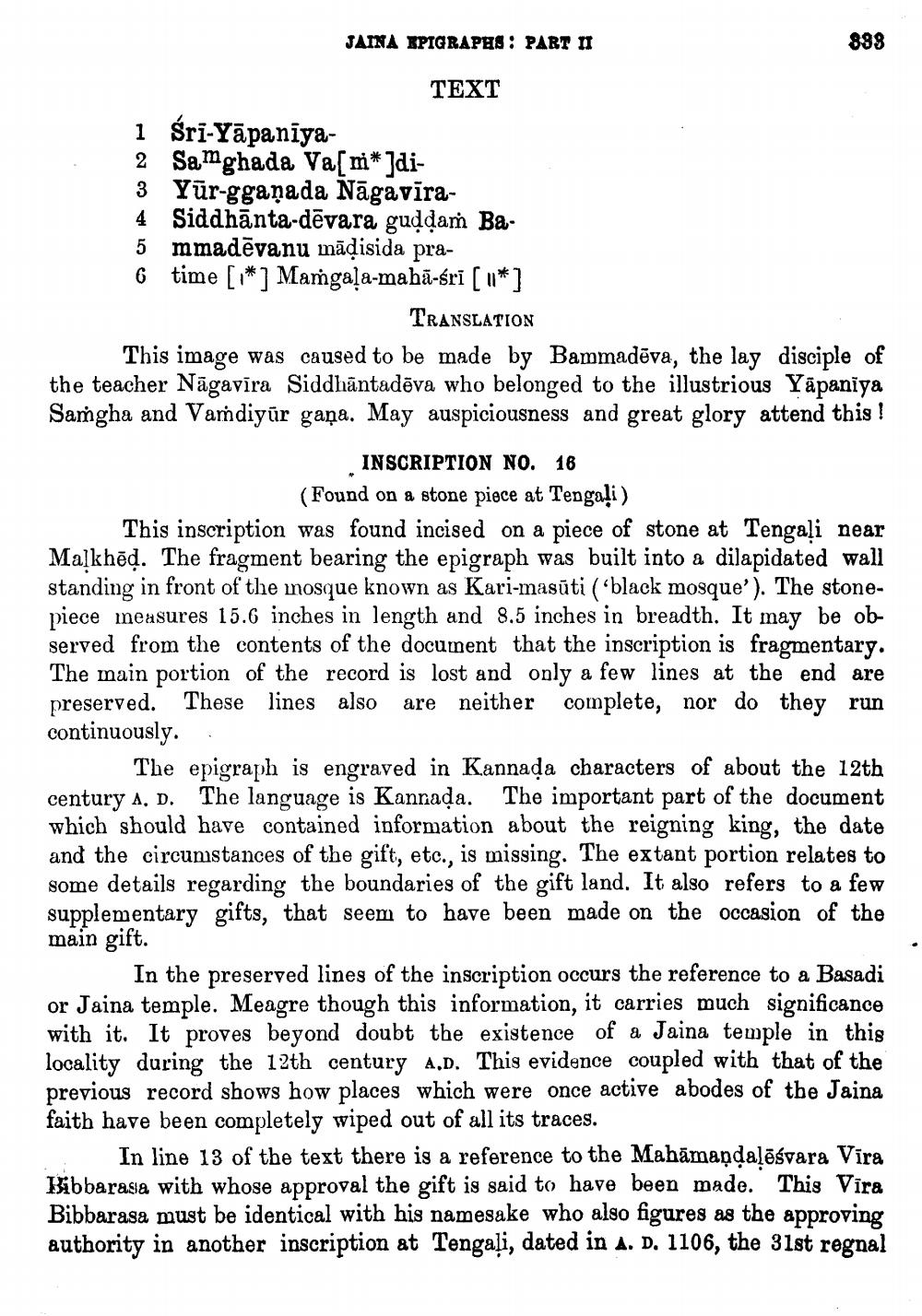________________
JAINA EPIGRAPHS: PART II
TEXT
1 Śrī-Yāpaniya2 Samghada Va[m*]di
3 Yur-gganada Nāgavīra4 Siddhanta-devara guddam Ba5 mmadēvanu māḍisida pra
6 time [*] Mamgala-maha-śrī [*]
888
TRANSLATION
This image was caused to be made by Bammadeva, the lay disciple of the teacher Nagavīra Siddhantadeva who belonged to the illustrious Yapaniya Samgha and Vamdiyur gana. May auspiciousness and great glory attend this!
INSCRIPTION NO. 16
(Found on a stone piece at Tengali)
This inscription was found incised on a piece of stone at Tengali near Malkhed. The fragment bearing the epigraph was built into a dilapidated wall standing in front of the mosque known as Kari-masūti ('black mosque'). The stonepiece measures 15.6 inches in length and 8.5 inches in breadth. It may be observed from the contents of the document that the inscription is fragmentary. The main portion of the record is lost and only a few lines at the end are preserved. These lines also are neither complete, nor do they run continuously.
The epigraph is engraved in Kannada characters of about the 12th century A. D. The language is Kannaḍa. The important part of the document which should have contained information about the reigning king, the date and the circumstances of the gift, etc., is missing. The extant portion relates to some details regarding the boundaries of the gift land. It also refers to a few supplementary gifts, that seem to have been made on the occasion of the main gift.
In the preserved lines of the inscription occurs the reference to a Basadi or Jaina temple. Meagre though this information, it carries much significance with it. It proves beyond doubt the existence of a Jaina temple in this locality during the 12th century A.D. This evidence coupled with that of the previous record shows how places which were once active abodes of the Jaina faith have been completely wiped out of all its traces.
In line 13 of the text there is a reference to the Mahāmaṇḍaļēśvara Vīra Bibbarasa with whose approval the gift is said to have been made. This Vira Bibbarasa must be identical with his namesake who also figures as the approving authority in another inscription at Tengali, dated in a. D. 1106, the 31st regnal




